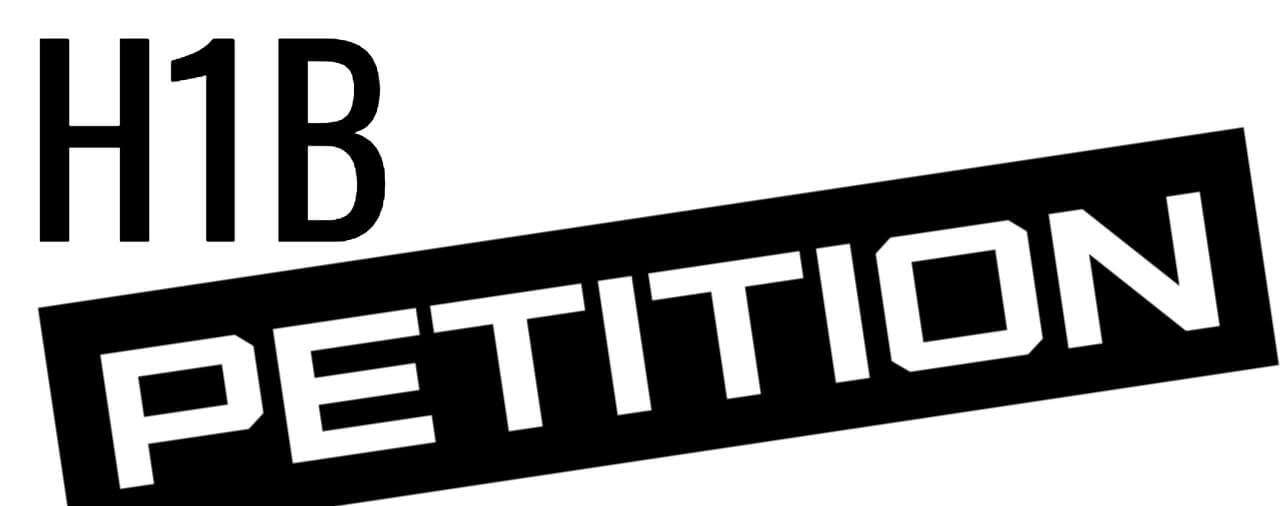- Introduction
- The Guiding Statute and Regulation
- Background: The Common Law Test
- Examples of Valid Employer-Employee Relationships
- Examples of Invalid Relationships
- Evidence for Initial Petitions
- Evidence for Extension Petitions
- Complying when Beneficiary is Placed at more than One Worksite Location
- Advice
Introduction
On January 8, 2010, United States Citizenship and Immigration Services (USCIS) released an important memorandum by the Associate Director Donald Neufeld titled “Determining Employer-Employee Relationship for Adjudication of H-1B Petitions, Including Third-Party Site Placements” [PDF version].1 While the Memo was written to advise USCIS officers on how to determine whether a prospective employer-employee relationship is valid for H1B [see article] purposes, it is also instructive for understanding what USCIS officers will look for in evaluating employer-employee issues pertaining to H1B work visas [see category]. We will use the Memo, along with other USCIS resources, to summarize what constitutes a valid employer-employee relationship for H1B purposes, and the types of evidence that may demonstrate to the satisfaction of USCIS that such a relationship exists.
The Guiding Statute and Regulation
In section II of the memorandum, Neufeld quotes a part of INA § 101(a)(15)(H)(i)(b), which statutorily defines an H1B nonimmigrant as an alien:
who is coming temporarily to the United States to perform services … in a specialty occupation described in section 1184(i)(1)…, who meets the requirements of the occupation specified in section 1184(i)(2)…, and with respect to whom the Secretary of Labor determines and certifies…that the intending employer has filed with the Secretary an application under 1182(n)(1).
In the same section, Neufeld quotes the regulatory definition of “United States employer” found in 8 C.F.R. § 214.2(h)(4)(ii):
United States employer means a person, firm, corporation, contractor, or other association, or organization in the United States which:
Engages a person to work within the United States;
Has an employer-employee relationship with respect to employees under this part, as indicated by the fact that it may hire, pay, fire, supervise, or otherwise control the work of any such employee; and
Has an Internal Review Service Tax Identification number.
The second point in section 214.2(h)(4)(ii) of the C.F.R., “Has an employer-employee relationship with respect to employees under this part,” is the main point that concerns the memo and this article. While that same point of the regulations provides a list of things that indicate a valid employer-employee relationship [“may hire, pay, fire, supervise, or otherwise control the work of any such employee”], there are many situations that may not be clear from merely relying upon the statutes and regulations.
Background: The Common Law Test
The memo discusses an important Supreme Court Case from 1992 for evaluating employer-employee relationships. In Nationwide Mutual Ins. Co v. Darden2 [henceforth, Darden], Justice David Souter wrote for a unanimous Supreme Court in holding that, when “In the past, when Congress has used the term ’employee’ without defining it, we have concluded that Congress intended to describe the conventional master-servant relationship as understood by common-law agency doctrine.”3 In section III, part A, of the memo, Neufeld explains in the Memo that the “common law test” requires weighing every aspect of the relationship to determine whether an employer-employee relationship exists, with no one factor being decisive. Drawing from Darden and a list of factors therein,4 Neufeld lists eleven questions that USCIS adjudicators should consider in assessing a relationship to see if an employer-employee relationship exists:
1. Does the petitioner supervise the beneficiary and is such supervision off-site or on-site?
2. If the supervision is off-site, how does the petitioner maintain such supervision?
3. Does the petitioner have the right to control the work of the beneficiary on a day-to-day basis if such control is required?
4. Does the petitioner provide the tools or instrumentalities needed for the beneficiary to perform the duties of employment?
5. Does the petitioner hire, pay, and have the ability to fire the beneficiary?
6. Does the petitioner evaluate the work-product of the beneficiary?
7. Does the petitioner claim the beneficiary for tax purposes?
8. Does the petitioner provide the beneficiary any type of employee benefits?
9. Does the beneficiary use proprietary information of the petitioner in order to perform the duties of employment?
10. Does the beneficiary produce an end-product that is directly linked to the petitioner’s line of business?
11. Does the petitioner have the ability to control the manner and means in which the work product of the beneficiary is accomplished?
Neufeld reiterates the point that no single factor is determinative under the common law test. A USCIS adjudicator may find that an employer-employee relationship exists where certain factors are either inapplicable or not satisfied, if by the totality of all the factors and evidence, it appears that the requisite relationship exists. However, Neufeld explains that a petitioner must generally be able to establish that he or she will have the right to control the beneficiary’s work, and that he or she will continue to have this right for the duration of the employment agreement.
Examples of Valid-Employer-Employee Relationships
Still in section III, part A, the memorandum provides a non-exhaustive list of examples of valid employer-employee relationships in a variety of common arrangements:
Traditional Employment: The beneficiary works at a location owned or leased by the petitioner and reports to the petitioner on a daily basis. The petitioner sets the work schedule of the beneficiary. The beneficiary uses the petitioner’s tools and/or instrumentalities to perform his or her duties. The petitioner directly reviews the work of the beneficiary. The petitioner claims the beneficiary for tax purposes and provides the beneficiary with medical benefits. [Exercise of Actual Control Scenario]
Temporary or Occasional Off-Site Employment: The petitioner is an accounting firm with numerous clients, and the beneficiary is an accountant. The beneficiary must travel to different client sites for auditing purposes. When performing off-site audits, the beneficiary must use established firm practices. If the beneficiary travels for work to an off-site location outside of the geographic location of the petitioner, the petitioner provides food and lodging costs. The beneficiary works at the central office when not performing audits. The beneficiary is paid by the petitioner and receives employee benefits from the petitioner. [Right to Control Scenario]
Long-Term or Permanent Off-Site Employment: The beneficiary is an architect working for the petitioner’s architectural firm. The beneficiary is working at the site of a client outside of the state of the petitioner’s main offices. The petitioner will place its architects at the off-site location for the duration of the project. The contract between the petitioner and client states that the petitioner will manage its employees at the off-site location. Instruments and tools are provided to the beneficiary by the petitioner. The beneficiary reports to the petitioner. The underlying contract states that the petitioner controls all of the beneficiary’s work. [Right to Control Specified and Actual Control is Exercised]
Long-Term Placement at a Third-Party Work Site: The petitioner is a computer software development company which has contracted with a third-party company to develop an in-house computer program to track its merchandise, using the petitioner’s proprietary software and expertise. The petitioner has contracted to place its software engineers at the client’s main warehouse to complete the project. The beneficiary is a software engineer who has been offered employment to fulfill the needs of the contract. While the beneficiary is at the client company’s facility, the beneficiary reports weekly to a manager who is employed by the petitioner. The beneficiary is paid only by the petitioner and receives employee-benefits from the petitioner. [Right to Control Specified and Actual Control is Exercised]
Regulatory Exception Where Petitioner is not the Employer: Agents as Petitioners: The petitioner is a modeling agency that books models for various modeling jobs. The beneficiary is a runway model. The petitioner and beneficiary have a contract that includes terms regarding how the agency will advise, counsel, and promote the beneficiary for fashion runway shows. The contract between the petitioner and beneficiary states that the petitioner will receive a percentage of the beneficiary’s fees from shows that it helps book. When the beneficiary is booked, he or she can negotiate pay with the fashion house. The fashion house, in this case the actual employer, controls when, where, and how the beneficiary will perform duties at shows for the fashion house. [Agent Has No Right to Control; Fashion House Has and Exercises Right to Control]
With regard to the scenario where an agent is the petitioner, the Neufeld Memo notes that an agent may act as a petitioner on behalf of the actual employer as well. However, in any event, the end-employer, except if the beneficiary is self-employed, must have a valid employer-employee relationship with the beneficiary if a non-employer agent is the petitioner.
Examples of Invalid Relationships
Still in section III, part A, the Neufeld Memo also provides a non-exhaustive list of examples where a valid employer-employee relationship would not exist:
Self-Employed Beneficiaries: The petitioner is a fashion merchandising company owned by the beneficiary, who is a fashion analyst. The beneficiary is the sole operator, manager, and employee of the petitioning company. As such, the beneficiary cannot be fired from the petitioning company and no outside entity can exercise control over the beneficiary. The petitioner has not provided evidence that the corporation, and not the beneficiary, will control the beneficiary’s work. [No Separation between Individual and Employing Entity; No Independent Control Exercised and No Right to Control Exists]
In a USCIS Questions & Answers page [henceforth “USCIS Q&A”],5 USCIS explained that in this scenario, the employer-employee relationship may have been established if the petitioner demonstrated that it had the right to control the beneficiary’s employment. One example provided is if the petitioner submitted evidence that there is a separate Board of Directors that would control the beneficiary’s employment.
Independent Contractors: The beneficiary is a sales representative who is selling skis for the petitioner, and works on commission. The beneficiary also sells skis for other companies that are independent of the petitioner. The petitioner does not claim the beneficiary for tax purposes, and does not control when, where, or how the beneficiary sells its products. The petitioner does not set the beneficiary’s work schedule, and does not conduct performance reviews. [Petitioner Has No Right to Control; No Exercise of Control]
Third-Party Placement (“Job Shop”): The petitioner is a computer consulting company that contracts with numerous outside companies in which it supplies the outside companies with employees to fulfill specific needs. The specific positions are not outlined in the contract between the petitioner’s company and the client ahead of time. The beneficiary is a computer analyst who has been assigned to fill a core position to maintain the client company’s payroll. At the client company, the beneficiary reports to a manager at the client company and not to the petitioner. The petitioner does not control how the beneficiary will complete his or her tasks, and no propriety information of the petitioner is used by the beneficiary to complete work assignments. The beneficiary’s end-product and payroll are not related to the petitioner’s line of business, and the beneficiary’s progress reviews are completed by the client company. [Petitioner Has No Right to Control; No Exercise of Control]
The USCIS Q&A at Q13 suggests that in the “Job Shop” scenario, the petitioner may have been successful had it demonstrated that it, and not the client company, would have the right to control the work of the beneficiary.
Evidence for Initial Petitions
The memo explains in section III, part B, point 1, that the petitioner must show that a valid employer-employee relationship will exist between it and the beneficiary. It goes on to list the following evidence that the petitioner may provide in order to demonstrate that a valid employer-employee relationship [list taken directly from the Memo]:
A complete itinerary of services or engagements that specifies the dates of each service or engagement, the names and addresses of the actual employers, and the names and addresses of the establishment, venues, or locations where the services will be performed for the period of time requested;
Copy of signed Employment agreement between petitioner and beneficiary detailing the terms and conditions of employment;
Copy of an employment letter that clearly describes the nature of the employer-employee relationship and services that the beneficiary will render;
Copy of relevant portions of valid contracts between the petitioner and a client (in which the petitioner had entered into a business agreement for which the petitioner’s employees will be utilized) that establishes that while the petitioner’s employees are placed at the third-party worksite, the petitioner will continue to have the right to control its employees;
Copies of signed contractual agreements, statements of work, work orders, service agreements, and letters between the petitioner and the authorized officials of the ultimate end-client companies where the work will actually be performed by the beneficiary, which provide information such as a detailed description of the duties the beneficiary will perform, the qualifications that are required to perform the job duties, salary or wages paid, hours worked, benefits, a brief description of who will supervise the beneficiary and their duties, and any other related evidence;
Copy of position description or any other documentation that describes the skills required to perform the job offered, the source of the instrumentalities and tools needed to perform the job, the product to be developed or the service to be provided, the location where the beneficiary will perform the duties, the duration of the relationship between the petitioner and beneficiary, whether the petitioner has the right to assign additional duties, the extent of petitioner’s discretion over when and how long the beneficiary will work, the method of payment, the petitioner’s role in paying and hiring assistants to be utilized by the beneficiary, whether the work to be performed is part of the regular business of the petitioner, the provision of employee benefits, and the tax treatment of the beneficiary in relation to the petitioner;
A description of the performance review process; and/or
Copy of petitioner’s organizational chart, demonstrating beneficiary’ s supervisory chain.
This list of factors is non-exhaustive, and specific factors may weigh differently in different cases, or sometimes be inapplicable entirely. Ultimately, however, the petitioner must demonstrate that it will have ultimate control over the beneficiary’s work. This is especially important when the beneficiary will be performing off-site work for a third-party client. Petitioner should study the above factors, and should consult with an experienced immigration attorney in order to determine the evidence, given the specific circumstances of the arrangement with the beneficiary, that may be most likely to establish a valid employer-employee relationship to the satisfaction of USCIS.
Evidence for Extension Petitions
If a petitioner is seeking to extend the H1B employment [see article] with the beneficiary, it must provide evidence that the previously-established employee-employer relationship existed throughout the beneficiary’s employment, and will exist for the duration of the extension. In section III, part B, point 2, of the memo, Neufeld provides the following list of evidence that the petitioner may provide in order to demonstrate that the employer-employee relationship exists in order for an extension petition to be approved [list taken directly from the memo]:
Copies of the beneficiary’s pay records (leave and earnings statements, and pay stubs, etc.) for the period of the previously approved H-1B status;
Copies of the beneficiary’s payroll summaries and/or Form W-2s, evidencing wages paid to the beneficiary during the period of previously approved H-1B status;
Copy of Time Sheets during the period of previously approved H-1B status;
Copy of prior years’ work schedules;
Documentary examples of work product created or produced by the beneficiary for the past H-1B validity period, (i.e., copies of: business plans, reports, presentations, evaluations, recommendations, critical reviews, promotional materials, designs, blueprints, newspaper articles, web-site text, news copy, photographs of prototypes, etc.). Note: The materials must clearly substantiate the author and date created;
Copy of dated performance review(s); and/or
Copy of any employment history records, including but not limited to, documentation showing date of hire, dates of job changes, i.e. promotions, demotions, transfers, layoffs, and pay changes with effective dates.
If the petitioner fails to demonstrate that it maintained a valid employer-employee relationship with the beneficiary throughout the initial H1B period, the extension petition will likely be denied unless the petitioner demonstrates that the failure was due to extenuating circumstances beyond the petitioner’s control.
Request for Evidence (RFE)
If the petitioner fails to establish, to the satisfaction of USCIS, that a valid employer-employee relationship exists, USCIS may issue a Request for Evidence (RFE). Neufeld advises USCIS officials in section III, part C, of the memo that the RFE must specifically state the reason why more evidence is needed, and be tailored to request specific types of evidence from the petitioner to remedy the deficiencies in the petition. In the event that a petitioner is issued an RFE tailored to a failure to demonstrate a valid employer-employee relationship, the petitioner should review it carefully with its immigration attorney, and attempt to expeditiously provide evidence to satisfy USCIS that a valid employer-employee relationship exists with the beneficiary.
Complying When Beneficiary is Placed at More than One Work Location
The memo makes clear in section III, part D, that the petitioner must comply with section 214.2(h)(2)(i)(B) of 8 C.F.R. when the beneficiary will be placed at more than one work location. In order to do this, the petitioner must submit a complete itinerary of services or engagements that specifies the dates of each service or engagement, the names and addresses of the actual employers, and the names and addresses of the establishment, venues, or locations where the services will be performed for the period of time requested. According to the Memo, this is so that USCIS may be satisfied that there is a specific plan in place when the beneficiary is working off-site from the petitioner, that the beneficiary is performing duties in a specialty occupation, that the beneficiary is working for the petitioner, and that the beneficiary is not being “benched” without pay in between assignments.
Advice
This memo provides a detailed guide on the evidence that USCIS expects from petitioners in order to establish that a valid employer-employee relationship will exist with the H1B beneficiary. As the memo takes pains to note, each case is fact specific, and the petitioner need only demonstrate that the combination of all of the factors shows that a valid employer-employee relationship will exist. Since no single factor is determinative, the importance of any given factors will depend on the circumstances surrounding the prospective employment. Petitioners for H1B workers should consult with an experienced immigration attorney who will have in-depth knowledge of the various factors that USCIS looks for in different cases, and may thus help the petitioner put together the most compelling case that an employer-employee relationship will exist with the beneficiary given the nature of the petitioner’s workplace and the specific jobs that the beneficiary would be performing.
- USCIS Memorandum, D. Neufeld, “Determining Employer-Employee Relationship for Adjudication of H-1B Petitions,” HQ 70/6.2.8, AD 10-24 (Jan. 8, 2010). Neufeld, Assoc. Director, Service Center Operations, USCIS, “Determining Employer-Employee Relationship for Adjudication of H-1B Petitions”
- Nationwide Mut. Ins. Co. v. Darden, 503 U.S. 318, 112 S. Ct. 1344, 117 L. Ed. 2d 581 (1992).
- See Darden at 322-323, citing Community for Creative Non-Violence v. Reid, 490 U.S. 730, 109 S. Ct. 2166, 104 L. Ed. 2d 811 (1989).
- See Darden at 323-324, [“we consider the hiring party’s right to control the manner and means by which the product is accomplished. Among the other factors relevant to this inquiry are the skill required,’ the source of the instrumentalities and tools,’ the location of the work,’ the duration of the relationship between the parties,’ whether the hiring party has the right to assign additional projects ‘to the hired party, the extent of the hired party’s discretion over when and how long to work; the method of payment; the hired party’s role in hiring and paying assistants,’ whether the work is part of the regular business of the hiring party; whether the hiring party is in business; the provision of employee benefits; and the tax treatment of the hired party.”]
- “Questions & Answers: USCIS Issues Guidance Memorandum on Establishing the “Employee-Employer Relationship” in H-1B Petitions,” USCIS, Q12
Resources and materials:
USCIS Memorandum, D. Neufeld, “Determining Employer-Employee Relationship for Adjudication of H-1B Petitions,” HQ 70/6.2.8, AD 10-24 (Jan. 8, 2010)
“Questions & Answers: USCIS Issues Guidance Memorandum on Establishing the “Employee-Employer Relationship” in H-1B Petitions,” USCIS, March 12, 2012, retrieved on September 1, 2015, available at www.uscis.gov [link]





